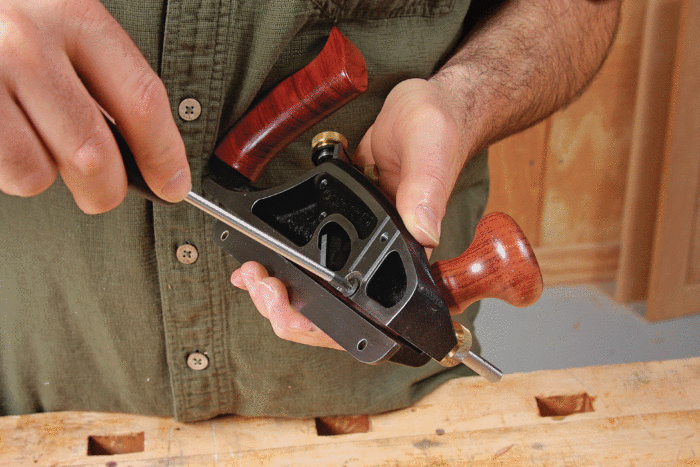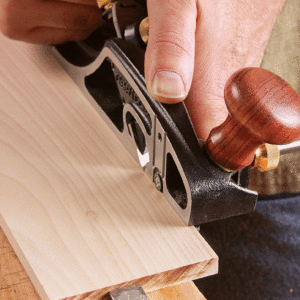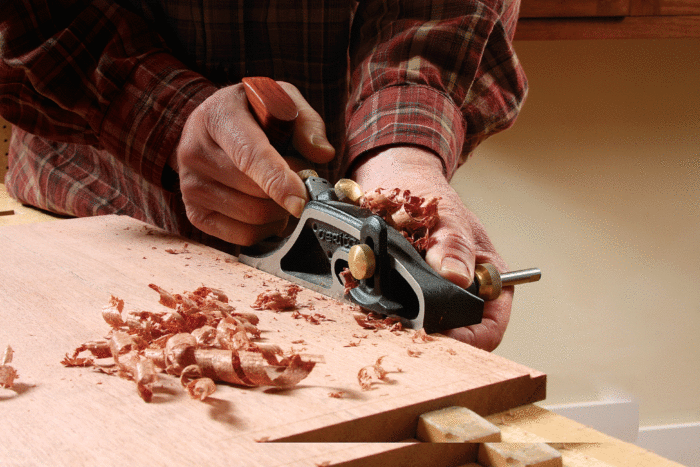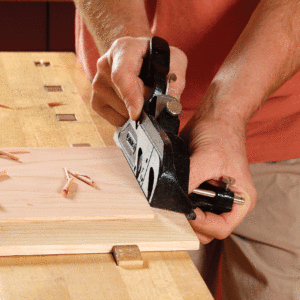When you think “hand-cut,” you probably envision dovetails and mortise-and-tenon joinery. But you may be surprised by how easy it can be to cut rabbets by hand, too—as long as you have the right tool. That, my friends, is the fillister plane, sometimes called a rabbet plane. With it you can cut a rabbet very quickly, without all the hassle of changing blades or bits and setting up the tablesaw or router table. But the fillister plane isn’t a one-trick pony. You also can use one to create a raised panel and to trim wide tenons, like those on a table with breadboard ends (right). Here’s how to set up this finicky tool so that you can get clean, accurate, and consistent cuts every time.
|
|
|
|
Set up the blade and nicker
To work properly, the nicker and blade must be set up to work in unison: The nicker cuts ahead of the blade, severing the fibers to reduce tearout, essential on crossgrain cuts. It should be set slightly deeper than the blade is cutting and perfectly in line with its outside edge.
Line them up. On some planes, the nicker is proud of the body. On these, lay a pocket rule on the nicker and blade, and adjust the blade until the rule is parallel to the body. If the nicker is flush with the plane body, just make the blade flush, too.
 |
 |
| Set the depth. After setting the blade to its typical cutting depth, adjust the nicker to cut about 0.003 in. deeper. Any deeper and it acts like a depth stop, preventing you from cutting the rabbet. If it’s shallower than the blade, it won’t sever the wood fibers deeply enough and tearout is likely. To check the setting, pull the plane backward. The nicker should cut a very shallow line, while the blade should lightly burnish the wood.
|
 |
How to cut perfect rabbets
The same basic technique applies to cross-grain rabbets, raising panels, and trimming tenons.
| Set the fence. Use a marking gauge to lay out both the width and the depth of the rabbet (right). Now place the plane on the board, with the nicker in the scribed line. Press the fence against the board’s edge and lock it in place (far right). |  |
 |
| Cut the first rabbet and set the depth. Don’t use the depth stop at first, just work down to the gauged line marking the rabbet’s depth (right). After you hit the line, put the plane in the rabbet, lower the depth stop to the board’s surface, and tighten the knob or screw that holds it in place (below). Now you can cut yards of identical rabbets. |  |












